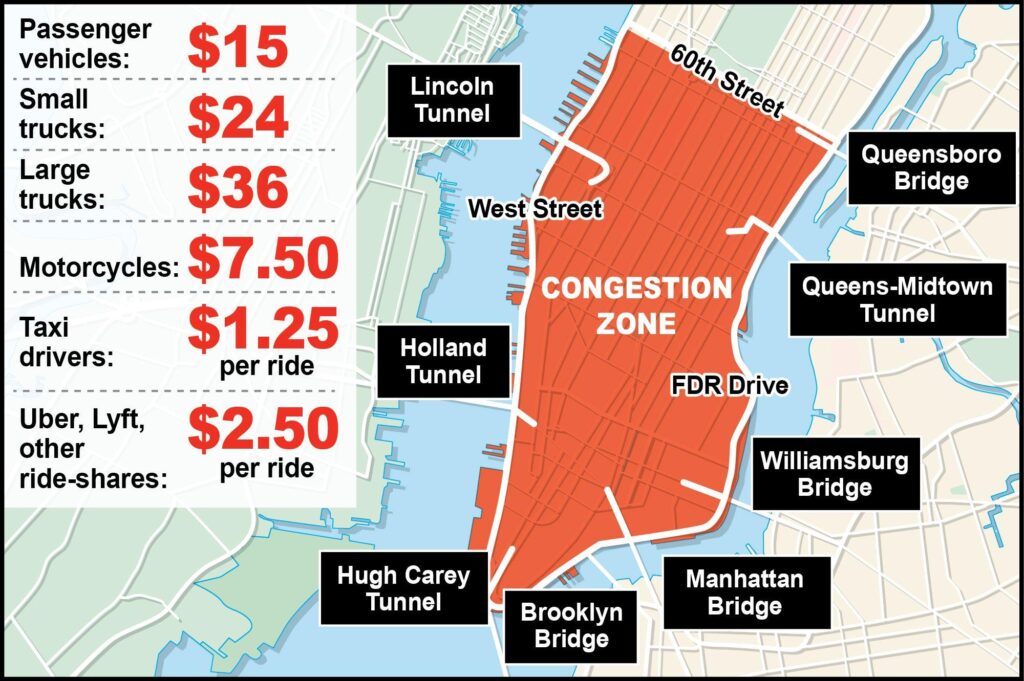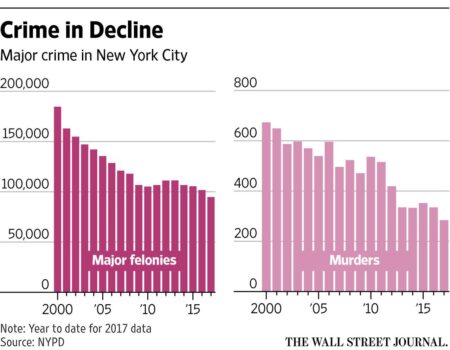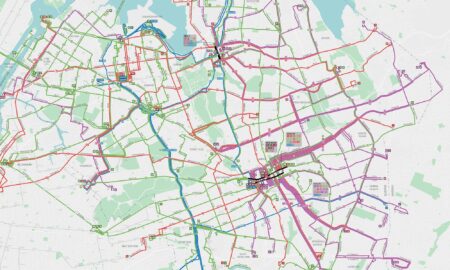Federal Withdrawal Stalls Manhattan’s Congestion Pricing Effort
The Trump administration has recently rescinded its federal endorsement of New York City’s congestion pricing program, delivering a major blow to the city’s strategy for mitigating traffic jams in Manhattan. This initiative, designed to impose fees on vehicles entering the island’s most crowded zones during peak periods, was widely regarded as a pivotal measure to ease gridlock and enhance urban air quality. However, federal authorities raised objections concerning the environmental review process and the economic repercussions of the plan, leading to the suspension of federal support and reigniting debates over the viability of congestion pricing in one of America’s busiest urban corridors.
Several critical factors contributed to this policy reversal:
- Economic Impact Concerns: Potential adverse effects on small businesses within the congestion zone.
- Social Equity Considerations: Worries that the fees could disproportionately burden lower-income drivers dependent on personal vehicles.
- Political Opposition: Pressure from influential interest groups and certain members of Congress resistant to urban tolling.
The table below contrasts the original congestion pricing framework with the current federal stance:
| Element | Initial Proposal | Federal Position Now |
|---|---|---|
| Implementation Timeline | Late 2023 | Indefinitely postponed |
| Fee Model | Dynamic tolls based on time and vehicle type | Halted pending further evaluation |
| Revenue Allocation | Funds earmarked for subway and bus system upgrades | No confirmed funding commitments |
| Public Sentiment | Divided, with strong advocacy from transit groups | Increased uncertainty and polarized opinions |
Consequences for NYC Transit Financing and Infrastructure Development
The federal government’s withdrawal of approval for Manhattan’s congestion pricing plan jeopardizes a vital funding stream for New York City’s transit infrastructure. The anticipated $15 billion in revenue was integral to the Metropolitan Transportation Authority’s (MTA) capital investment blueprint, aimed at modernizing subway lines, expanding bus rapid transit, and improving accessibility for millions of daily riders. Without this financial backbone, the city confronts significant challenges in maintaining and advancing its transit network.
Policymakers and transit agencies must now explore alternative funding mechanisms, including:
- Raising local taxes or fees to compensate for lost revenue
- Forging public-private partnerships to accelerate infrastructure projects
- Postponing or scaling down key transit improvements
Failure to secure adequate funding risks exacerbating traffic congestion, deteriorating transit service quality, and missing critical environmental targets. The table below outlines the potential impact on select major projects:
| Project | Projected Cost | Funding Outlook | Potential Delay |
|---|---|---|---|
| Second Avenue Subway Phase 2 | $6.5 billion | Funding at risk | 2 to 3 years |
| Bus Rapid Transit Expansion | $1.8 billion | Uncertain | 6 to 12 months |
| Subway Signal Upgrades | $3 billion | Partially secured | 1 to 2 years |
Stakeholder Responses and Political Fallout in Urban Transit Policy
The sudden federal reversal has provoked strong reactions across New York’s urban planning and environmental communities. City leaders who had championed congestion pricing as a transformative solution expressed frustration, emphasizing that the decision undermines years of strategic planning aimed at reducing traffic and pollution. A senior transportation official remarked, “This setback disrupts a carefully crafted plan to improve mobility and air quality.” Meanwhile, commuters and advocacy groups remain divided: some drivers welcome the suspension of fees, while environmental advocates decry the move as a regression in combating climate change.
Politically, the rollback has intensified debates over the balance of power between federal and local governments in shaping urban transportation policies. The table below summarizes key stakeholder perspectives:
| Stakeholder | Position | Political Consequence |
|---|---|---|
| New York City Officials | Disappointed; advocating for federal reinstatement or local alternatives | Strengthening calls for municipal autonomy in transit decisions |
| Trump Administration | Defends rollback citing economic risks | Reasserts federal oversight over urban policy |
| Commuters | Mixed reactions; some relieved, others support pricing | Potential influence on local electoral outcomes |
| Environmental Groups | Strongly opposed; view decision as a setback | Mobilizing advocacy for sustainable urban policies |
- Federal vs. Local Authority: The controversy highlights ongoing tensions over jurisdiction in urban transportation governance.
- Electoral Implications: The issue may sway voter preferences on transportation and environmental platforms.
- Policy Uncertainty: Stakeholders express concern about the unpredictability of future urban transit initiatives.
Strategies for Advancing Future Congestion Management
In response to the recent federal withdrawal, it is imperative that policymakers adopt a more flexible and participatory approach to congestion management. Engaging a broad spectrum of stakeholders—including local communities, transit agencies, and environmental advocates—will be essential to crafting equitable and effective solutions. Transparent communication regarding the benefits, costs, and necessary adjustments can help rebuild public trust and facilitate smoother implementation.
Furthermore, leveraging data analytics and real-time traffic monitoring can enable dynamic adjustments to congestion policies, improving responsiveness and efficiency. The table below outlines critical factors to consider when designing next-generation congestion strategies:
| Key Consideration | Strategic Implication |
|---|---|
| Equity and Accessibility | Design measures that minimize disproportionate impacts on low-income populations |
| Technological Innovation | Incorporate smart sensors and adaptive pricing models for flexibility |
| Alternative Transit Investments | Expand and subsidize public transportation options to reduce car dependency |
| Environmental Objectives | Align congestion policies with citywide emissions reduction targets |
Conclusion: Navigating the Future of Urban Congestion Pricing
The Trump administration’s decision to rescind federal approval for Manhattan’s congestion pricing plan represents a major obstacle in New York City’s efforts to alleviate traffic congestion and improve environmental conditions. As city officials reassess their options, the debate over congestion pricing remains highly polarized, with significant implications for urban transportation policy nationwide. Moving forward, collaboration between local and federal entities, coupled with innovative, equitable strategies, will be crucial to addressing the persistent challenges of urban mobility and sustainability.













